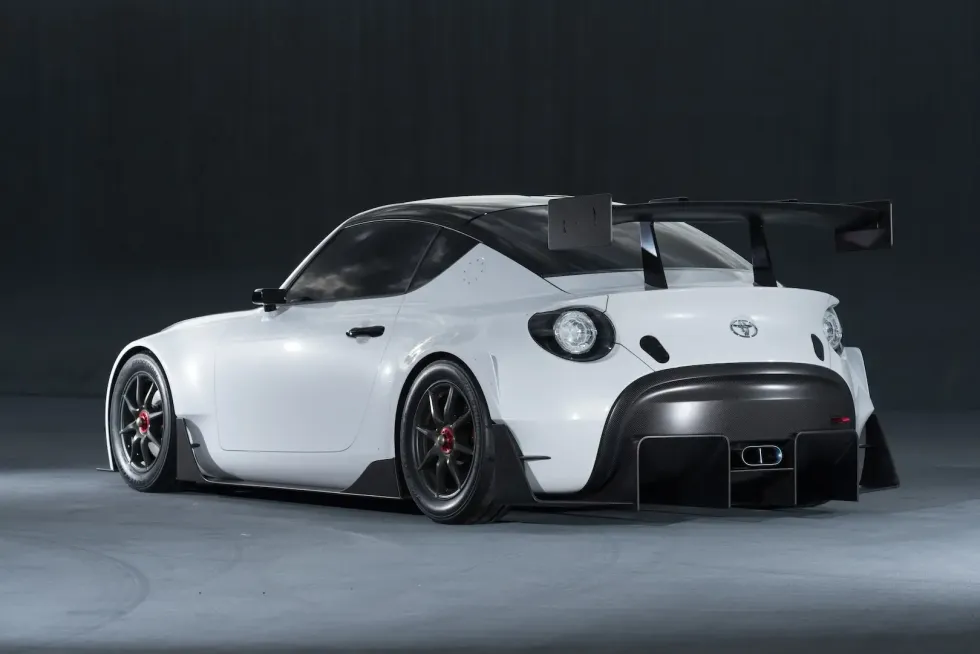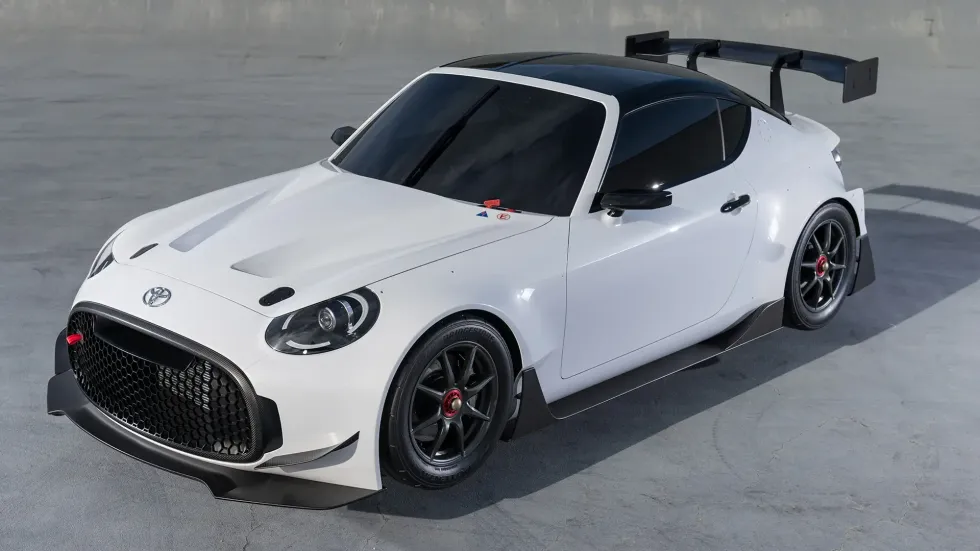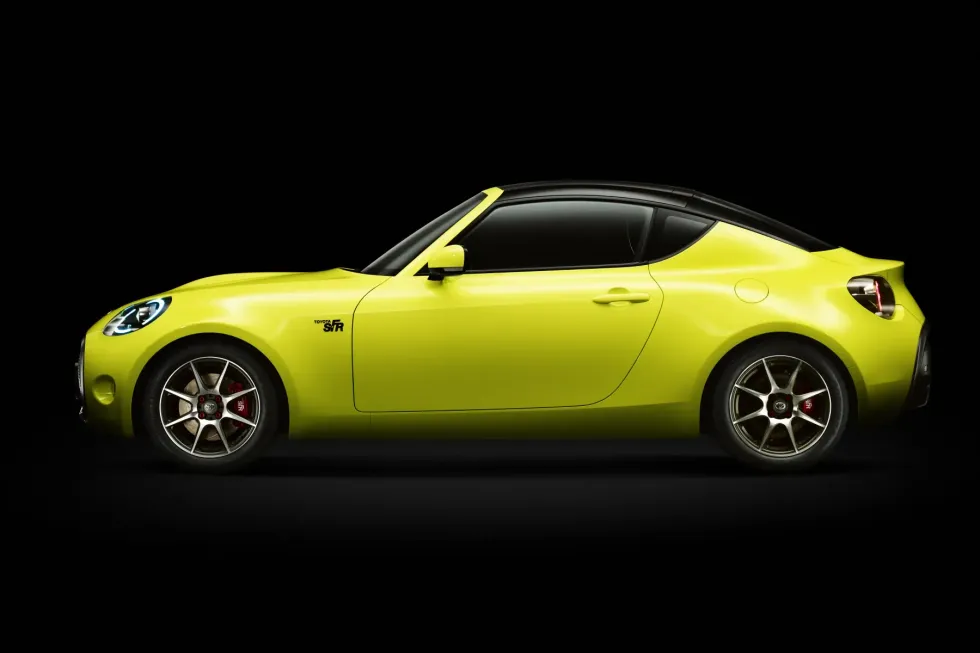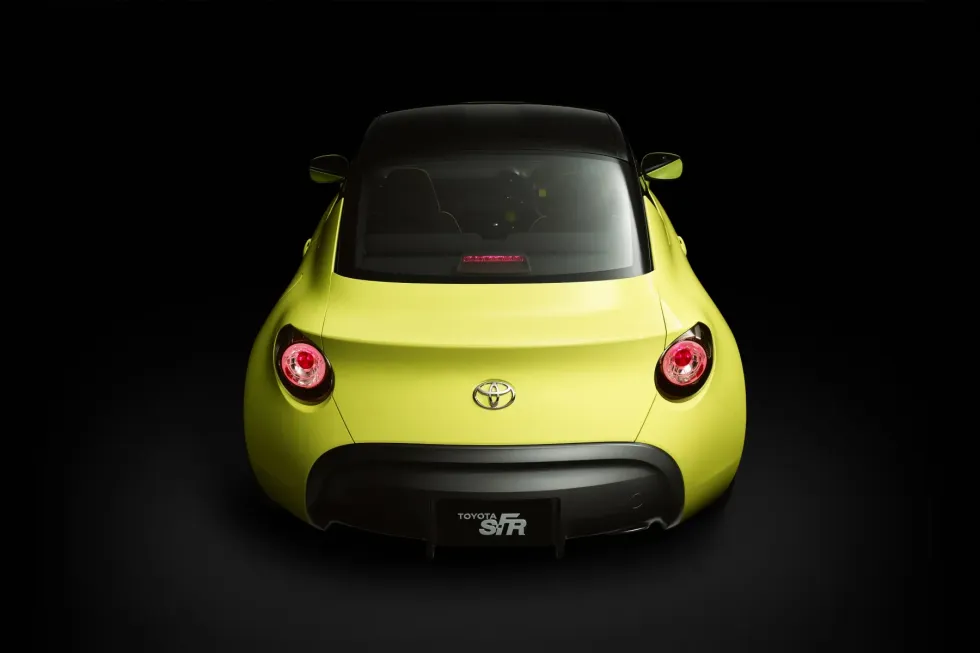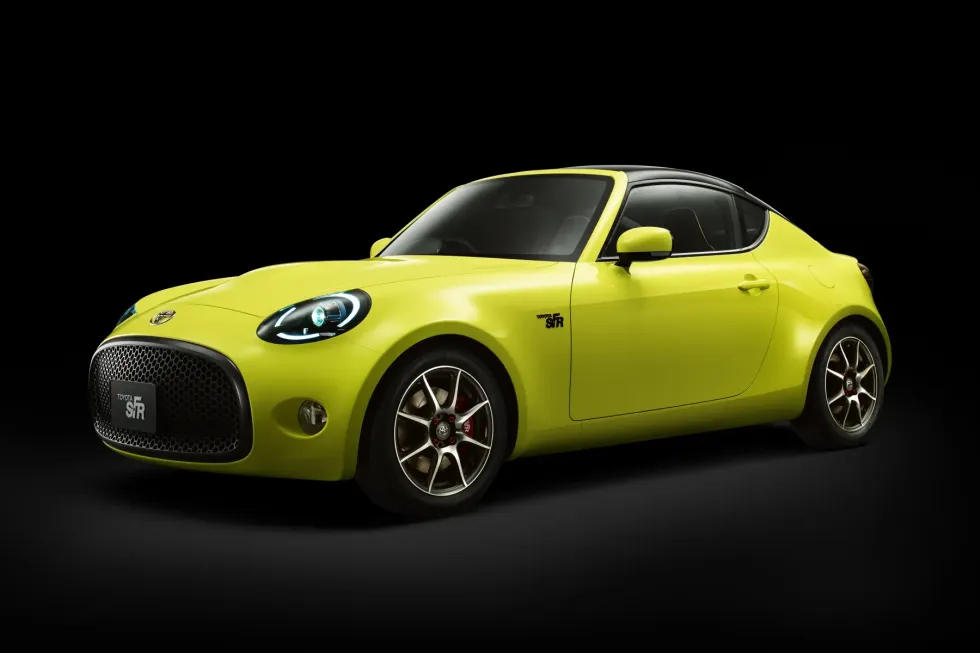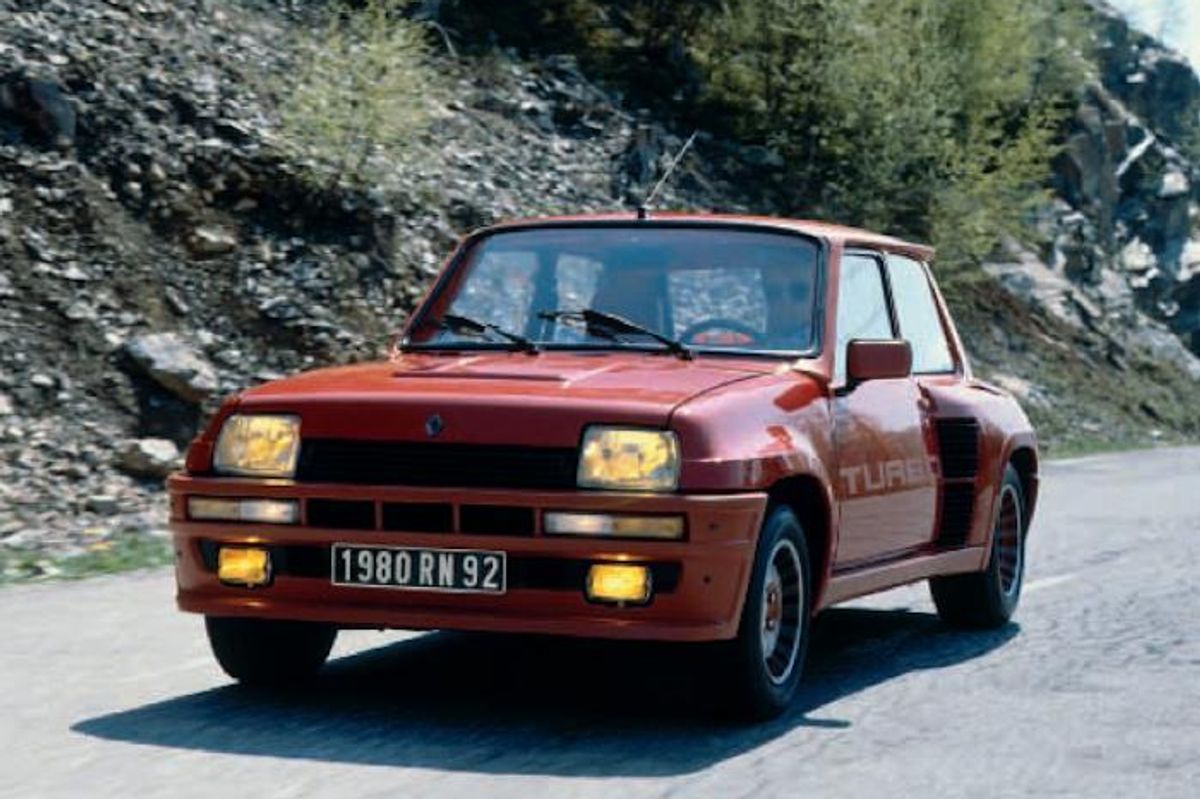
Buy
Resources
Entertainment
Magazine
Community
Renault R5 Turb0. All images courtesy of Renault Classic.
While many enthusiasts associate the Volkswagen Golf GTI with the birth of the hot hatchback craze (overlooking, of course, the Mini Cooper and Cooper S models), the European launch of the Renault 5 Alpine (briefly) preceded the 1976 launch of the VW GTI. Like the Volkswagen, the original Renault 5 Alpine featured a normally-aspirated four-cylinder engine, mounted in a front-wheel drive platform with a suspension tuned for handling over ride comfort. The Renault's 1.4-liter four-cylinder engine received hemispherical heads, further blessed with a crossflow design, and output was rated at a modest 92hp. From these humble beginnings, however, would spring one of the most memorable cars of the 1980s.
In 1977, Renault began building a car for its return to World Rally Championship competition, as it had been absent from the series since taking the 1973 title with an Alpine-Renault A110. As the bulk of the automaker's 1977 motorsport budget was consumed by its Formula 1 efforts, the decision was made to base the new rally car on the production Renault 5 Alpine hatchback. For improved handling, the car's front-engine, front-drive layout was scrapped for a mid-engine, rear-drive layout that positioned the engine and gearbox longitudinally, behind the front seats. To avoid the expense of building a separate chassis, the decision was made to retain the Renault 5's basic platform, but to strengthen the rear of the car's chassis to cope with the repositioned the engine.
To increase output, the 1.4-liter four-cylinder engine received Bosch K-Jetronic fuel injection, a transistorized ignition and a single Garrett T3 turbocharger with an air-to-air intercooler. The net result was 158hp in road-going variants, and significantly more in race-prepped examples. To cope with the added strain, the engine also received a strengthened crankshaft, a revised head gasket, a new oil pump and brass valve guides.
1982 Renault R5.
The Renault 5's front double-wishbone suspension was retained, but the rear suspension was the double-wishbone and coil-spring setup found on the Alpine-Renault A310. Oversize rear wheels, shod with 225mm Michelin tires, required the use of exaggerated rear fenders, equipped with large intakes to flow air to the engine and radiators. While the car may have looked a bit odd, its performance was nothing to laugh at, even in a mild state of tune. Early road tests reported a 0-60 MPH time as low as 7.1 seconds, on the way to a claimed top speed of 125 MPH. As for handling, most reviewers claimed that the new R5 Turbo, as the car was affectionately known, cornered like a go kart.
Renault's initial plan was to produce 400 road-going examples, the minimum needed for homologation purposes. When the car was revealed to the public at the 1980 Brussels Motor Show, however, Renault was surprised to see the level of customer interest in its narrowly-focused race car for the street. In the car's first three production years, the Dieppe, France, Alpine factory produced 1,820 R5 Turbos, though it isn't clear how many examples wound up wearing registration plates instead of competition numbers.
The R5 Turbo 2.
To further exploit the popularity of the R5 Turbo, the automaker introduced a revised, lower-cost version called the R5 Turbo 2 for the 1983 model year. While original Turbo models generally used lighter aluminum components for the roof, doors and hatch, as well as a unique dashboard and instrumentation, the Turbo 2 relied on the Renault 5's steel roof, doors and hatch, as well as most of its interior components. The drivetrains in both versions were identical, although the fuel tank in Turbo 2 models was reportedly lower in capacity. The changes lowered the car's cost and simplified production, but had no significant impact on performance despite the Turbo 2's added weight. As a result, sales increased dramatically from 445 units of the R5 Turbo in 1982 to 1,345 units of the R5 Turbo 2 in 1983.
Assembling an R5 Turbo 2 in Dieppe.
Alpine factory records show that both variants were built from 1984 through the end of production in 1985, although Turbo 2 models were constructed in significantly higher quantities. In total, some 5,007 examples were produced, with a limited number finding their way to customers in the United States via importer Sun International (or the gray market).
Though racing was the raison d'etre behind the R5 Turbo's development, all variants achieved only modest success in World Rally Championship competition, racking up just four victories (but significantly more stage wins) from 1981 though 1986. Early competition models produced 178 horsepower, but by 1984 the Renault R5 Maxi Turbo put out as much as 345 horsepower from its turbocharged 1.5-liter engine. On dirt or gravel rally stages, their mid-engine, rear drive layout and pronounced turbo lag proved challenging to master, even for veteran drivers. As all-wheel-drive Group B rally cars became more common, the R5 Turbo proved less and less competitive against rivals with better traction. It's worth noting that the R5 wasn't just a one-trick competition pony, however, as the car was also campaigned in numerous road racing series throughout Europe in the 1980s.
The R5 Turbo of Jean Ragnotti and Jean-Marc Andrie, on its way to winning the 1982 Tour de Corse.
Today, the R5 Turbo and Turbo 2 retain a dedicated following, and low-mileage examples turn up on a somewhat regular basis. As a purpose-built sports car, the Renault doesn't make a practical or comfortable daily driver, and is best thought of as a "special occasion" car. For those with a nostalgia for all things from the 1980s, and blessed with access to winding roads (or better, a nearby racetrack), the Renault R5 Turbo variants offer a satisfying addition to the garage.
Recent
Toyota
Toyota is pulling out all the stops to compete with the likes of affordable sports cars like the Mazda Miata. The automaker reportedly plans to put the S-FR concept car, originally debuted in 2015, into production. With potential release dates slated for early-2026 or early-2027, perhaps Miata may not always be the answer.
A new report out of Japan confirmed that the Toyota S-FR concept, first seen at the 2015 Tokyo Motor Show, will hit the market to challenge the entry-level sports car segment. Forbes backs up this claim via its print edition of Best Car. According to the report, the Toyota S-FR will be produced in partnership with Daihatsu, a wholly owned subsidiary of Toyota, and Suzuki, of which the Toyota Motor Corporation owns 4.94 percent.
From the sounds of it, the S-FR will share a platform with the Daihatsu Vision Copen that was revealed at the 2023 Tokyo Mobility Show. It will supposedly feature the same two-plus-two seating as displayed in the concept, but will be even smaller and lighter than the Toyota 86 model.
The Toyota S-FR will reportedly get its power from a turbocharged three-cylinder engine that will send around 150 horsepower to the rear wheels. If these figures sound familiar, you may have also heard the rumors about Toyota reviving the Starlet with a GR performance version that has similar specs; a 1.3-liter engine producing 150 horsepower.
Like most concept cars, the S-FR’s design will see some changes before production, in this case reports point specifically to a smaller grille and altered headlights. Whether or not the production model will incorporate the concept’s aero elements is unknown.
Toyota’s target MSRP of $22,700 for the S-FR could potentially beat out the Mazda Miata by around $6,000. Whether or not the S-FR will be sold in the States to potentially compete with Toyota’s existing GR86 model’s sales is also, sadly, unknown, but we have our fingers crossed.
Keep reading...Show Less
Toyota
JDM fans rejoice: A recent report out of Japan states that Toyota could be adding to its GR lineup with a front-wheel drive Toyota Starlet hatchback. The reborn Toyota Starlet will reportedly join the ranks of the existing GR Supra, GR 86, GR Yaris, and GR Corolla models.
Built in partnership with Gazoo Racing, Toyota’s motorsport division, the new Starlet will reportedly be built as a rally-focused machine, which makes sense when you consider Toyota’s history in the Rally 4 class. The terrain-dominating Starlet hatchback would compete against Toyota’s rally rivals, such as the Ford Fiesta, Renault Clio, and Peugeot 208.
This information comes from the Japanese car information magazine Best Car. Of course, the production Starlet GR wouldn’t have the rally car’s wide fenders and aggressive aerodynamics, but both versions would likely be powered by a 1.6-liter or 1.3-liter turbocharged three-cylinder engine. It’s our hope that it would be offered with the choice of a six-speed manual transmission or an eight-speed automatic, which would send around 150 horsepower to the front wheels. The subcompact hatch will supposedly weigh in at a mere 2,160 pounds, 727 pounds lighter than a Yaris GR.
The new Toyota Starlet could reportedly fetch between 2.5 million yen and 2.8 million yen, around $16,000 and $18,000, respectively, but if it does go into production, don’t expect to see the model hit the U.S. market anytime soon.
Keep reading...Show Less





